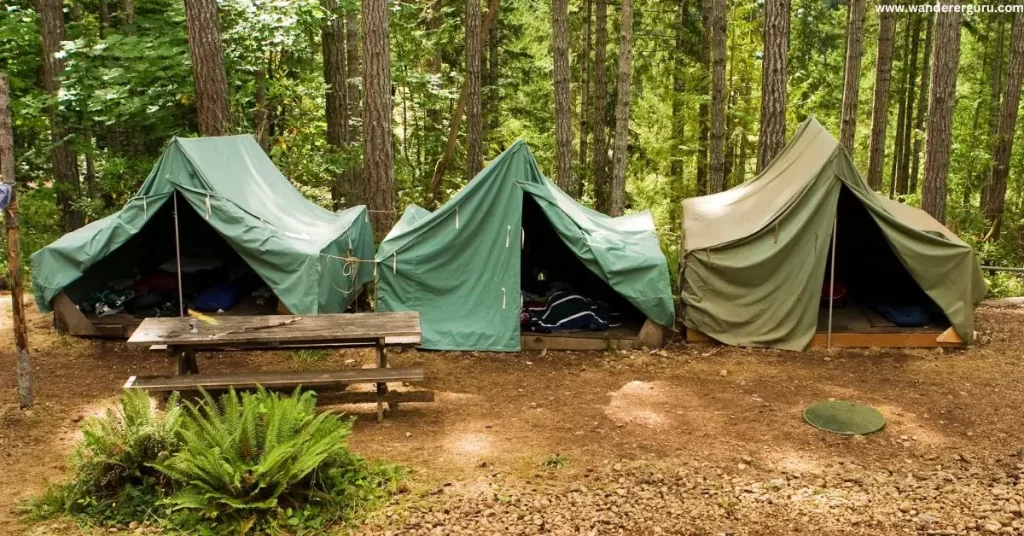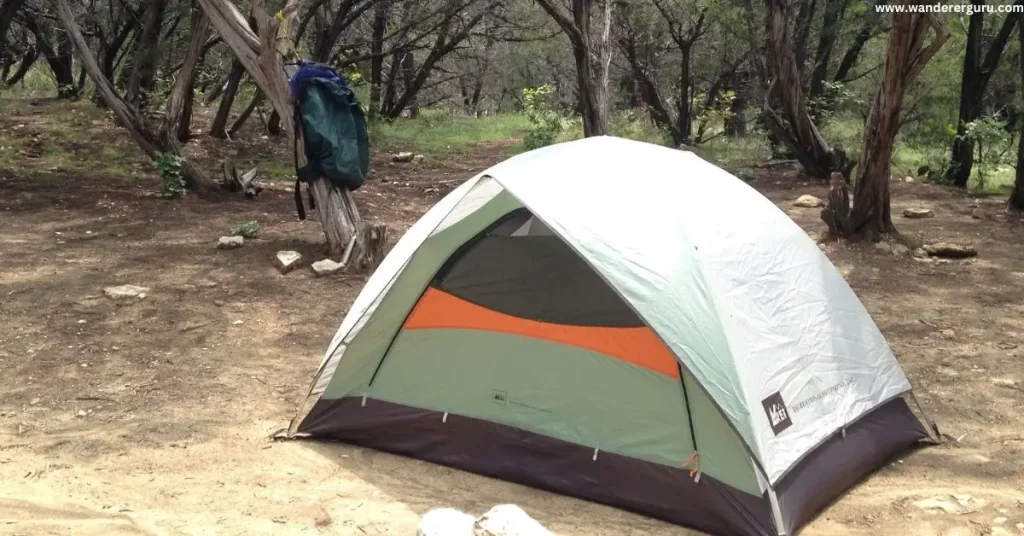Do you want to clean tent mold and don’t know how to do it? Then you’re at the right place. Cleaning a tent mold is not easy without proper instructions, you can get health risks, structural damage and can also spread. The mold can contaminate other camping gear. The longer you leave Mold uncleaned, the more difficult it becomes to clean. But don’t worry, you are in the right place. In this article, you will learn how to clean tent mold very easily. Just you need to follow all the steps that are mentioned in this article.
How to clean tent mold and What is it?
Cleaning tent mold is essential not only for maintaining the longevity of your tent but also for safeguarding your health and ensuring a pleasant outdoor experience. Before we dive into the cleaning process, it’s essential to understand what tent mold is and why it forms. Mold is a type of fungi that thrives in damp and humid environments.
When moisture becomes trapped within the fabric of your tent, whether due to rain, condensation, or inadequate drying, it creates the perfect conditions for mold growth. Mold not only looks unsightly but can also compromise the structural integrity of your tent and pose health risks.
Bonus:
TENT VESTIBULE WHAT IS IT AND DO YOU ACTUALLY NEED IT?
Step-by-Step Cleaning Process
Follow these steps to clean tent mold and restore your camping gear effectively:
Step 1: Choose the Right Location
Find an outdoor space with proper ventilation to clean your tent. This will help prevent the spread of mold spores indoors and ensure that your tent dries thoroughly after cleaning.
Step 2: Prepare the Cleaning Solution
In a bucket, mix equal parts of water and mild dish soap. This solution will help break down and remove the Mold while being gentle on your tent fabric.
Step 3: Test a Small Area
Before applying the cleaning solution to the entire tent, test it on a small, inconspicuous area to ensure that it doesn’t cause any damage or discoloration.
Step 4: Scrub Gently
Dip a soft-bristle brush or sponge into the cleaning solution and gently scrub the areas affected by Mold. Use circular motions and avoid applying excessive pressure to prevent damaging the tent fabric.
Step 5: Address Stubborn Mold
For stubborn mold stains, create a mixture of equal parts white vinegar and water in a spray bottle. Spray this solution onto the affected areas and let it sit for a few minutes before gently scrubbing again.
Step 6: Rinse Thoroughly
Using clean water, rinse the tent thoroughly to remove any residual soap or vinegar solution. Make sure to rinse until there are no traces of cleaning agents left on the fabric.
Step 7: Dry the Tent Properly
After cleaning:
Allow the tent to dry completely in a well-ventilated area.
Avoid direct sunlight, as it can degrade the tent fabric over time.
Ensure that both the tent body and rainfly are thoroughly dry before storing.
Step 8: Prevent Future Mold Growth
To prevent Mold from returning, follow these tips:
Always dry your tent entirely before storing it.
Store your tent in a cool, dry place with good ventilation.
Avoid packing a damp tent after camping; allow it to air out before storage.
Materials You’ll Need to clean tent mold
Gathering the suitable materials before you begin the cleaning process is crucial. Here’s a list of items you’ll need:
- Mild dish soap
- White vinegar
- Water
- Soft-bristle brush or sponge
- Bucket or large container
- Spray bottle
- Clean, dry cloths
- Outdoor space with good ventilation
How to clean canvas tent mold?

To clean Mold from a canvas tent, mix mild soap and water, then scrub gently with a soft brush. For stubborn Mold, use a vinegar-water solution. Rinse thoroughly, ensuring no residue remains. Dry the tent in a well-ventilated area, avoiding direct sunlight. Prevent future mold growth by storing the dry tent in a cool, ventilated space. Regular maintenance and proper storage ensure a mold-free canvas tent for your next camping trip. For more ideas, visit my Pinterest.
How to wash a tent mold in the washing machine?
Cleaning tent mold, when done carefully, typically won’t damage the tent. However, aggressive scrubbing, using harsh chemicals, or improper drying methods might harm the fabric’s integrity. To prevent damage, opt for gentle cleaning solutions like mild soap and water or vinegar-water mixtures. Always test a small area first. While mold removal won’t inherently damage the tent, mishandling during the cleaning process can compromise its lifespan. Thus, following recommended cleaning steps and precautions is essential to maintain your tent’s quality
Conclusion
Cleaning a tent mold is must so we can utilize it properly while camping. After following all the steps properly you can clean a tent mold without any trouble. You can also get the best camping experience of your life. Remember those who done cleanliness they are protected from diseases, laziness, and other type of troubles.
The tips mentioned in this article are provided by professionals and they have tested it personally. They reviewed them the best. Don’t forget to comment below if you learned something from this article 🙂
FAQs
Q1. What causes Mold to grow on tents?
A: Mold on tents thrives in damp, humid conditions. It commonly forms due to factors like rain, condensation, or improper drying before storage. Moisture trapped within the tent’s fabric creates an ideal environment for mold growth.
Q2. Can cleaning Mold damage my tent?
A: Cleaning mold from a tent won’t typically damage it if done carefully. However, using abrasive scrubbing, harsh chemicals, or incorrect drying methods can compromise the fabric’s integrity. Opt for mild soap and water solutions or vinegar-water mixtures, and always test a small area first.
Q3. How do I clean Mold off a canvas tent?
A: Create a mixture of mild soap and water, then gently scrub the affected areas with a soft brush. For stubborn Mold, use a solution of white vinegar and water. Thoroughly rinse the tent to remove residue, and dry it in a well-ventilated spot, avoiding direct sunlight.
Q4. How often should I clean my tent for Mold?
A: The frequency of cleaning depends on usage and storage conditions. It’s a good practice to inspect and clean your tent after every camping trip, especially if it is exposed to moisture. Regular maintenance, proper drying, and storage will help prevent mold growth and prolong your tent’s lifespan.
Bonus:

